
In the last entry, Beijing Rising - Of Walls and Walkways, I introduced my summer fellowship and the groundwork and research of Beijing that I have so far compiled. In this entry, I give a brief snapshot of a quick layover I had on my way to China.
Arriving in Tokyo at 23:00 on a Saturday night, my good friend and roommate of two years in St. Louis, Ryunoshin (Dew) Hirai, picked me up at Haneda airport. Dew is a Tokyo native and one of the most talented and driven designers I have ever met. You can check out his website here He currently works in the office of Klein Dytham Architecture. Our 17 hours together was non-stop and relentless as he gave me the most enjoyable and thorough whirlwind experience of his impressive city.
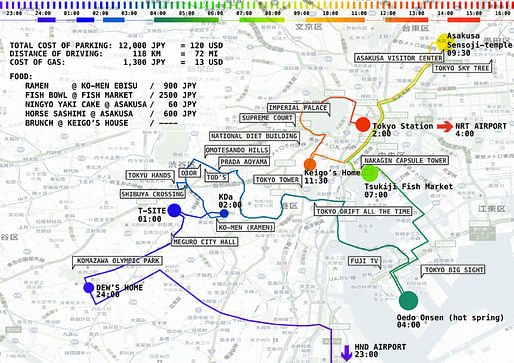
In typical Dew fashion, he whipped up this awesome mapping of our tour.
There was little time for sketching, and at the pace we went I did more observing with my own eyes than my camera. From the food, to the architecture offices, high profile buildings, the chaotic Tokyo grid, insane highway system, fish markets, onsen bath houses, and a morning brunch we saw many things of which I have nothing to show in this blog. Nonetheless, here you have it: a snapshot of my 17 hours in Tokyo:
With a metropolitan population of over 35 million residents, Tokyo is one of the densest urban areas in the world. 
With a trusty GPS and a rental car, the city was ours for 17 hours.
One of the first stops was a visit to Klein Dytham's Daikanyama T-Site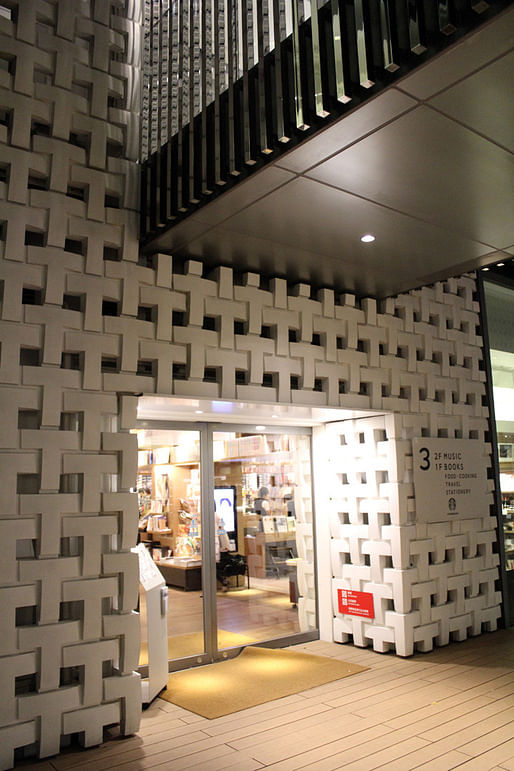
The project is a campus-like complex for Tsutaya, a giant in Japan’s book, music, and movie retail market. Located in Daikanyama, a low-rise Tokyo shopping district, it stands alongside a series of buildings designed by Pritzker Prize-winning architect Fumihiko Maki.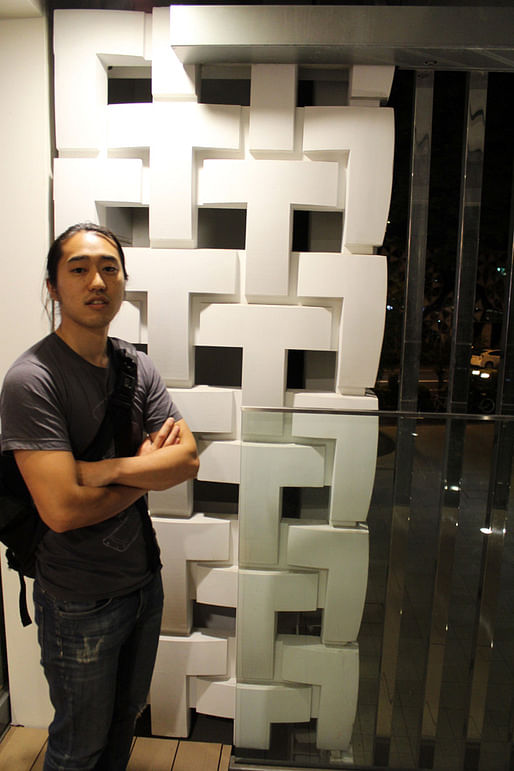
The building's skin was an impressive series of pre-fab T-shaped panels that allowed for varying degrees of closed, open, and glazed surfaces.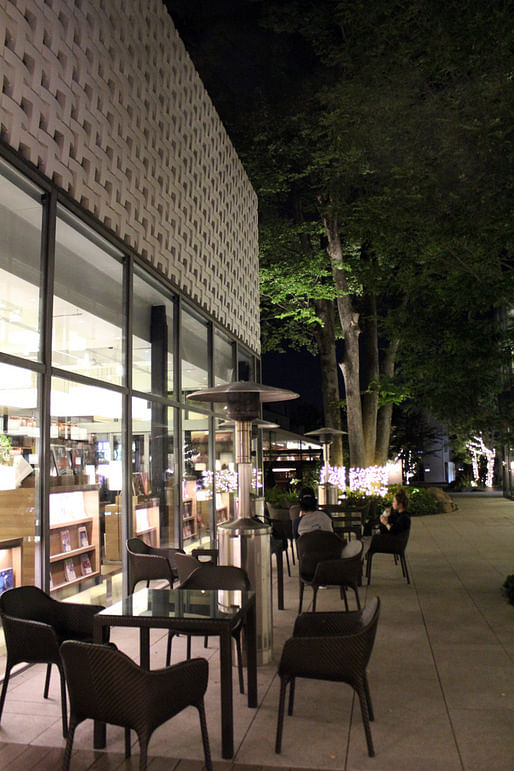
Even well after 1:00, the complex was buzzing with people reading, working, and socializing.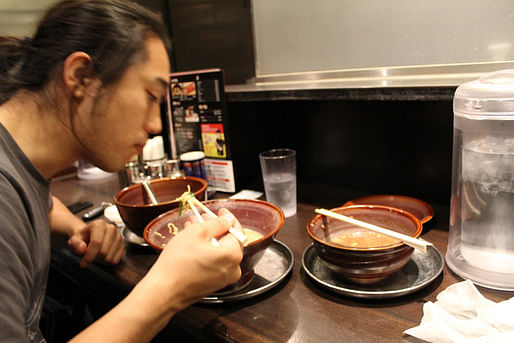
Early morning pit stop at a ramen house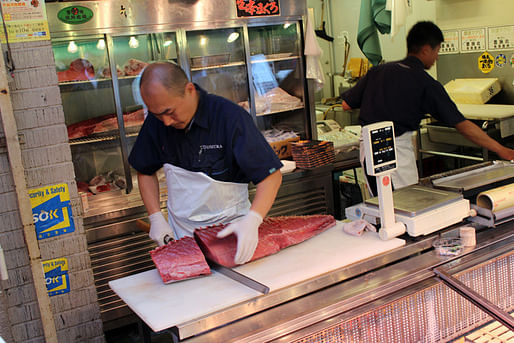 For the remainder of the night we went to a traditional Japanese Onsen bath house where I washed off the 15 hour flight. We rested there and slept in a room for that purpose, rising withing an hour and a half to get and early start at the Tsukiji Fish Market. Like the onsen (and much of what I saw in Japan), every move and act is a display of process, craft, and pride.
For the remainder of the night we went to a traditional Japanese Onsen bath house where I washed off the 15 hour flight. We rested there and slept in a room for that purpose, rising withing an hour and a half to get and early start at the Tsukiji Fish Market. Like the onsen (and much of what I saw in Japan), every move and act is a display of process, craft, and pride. 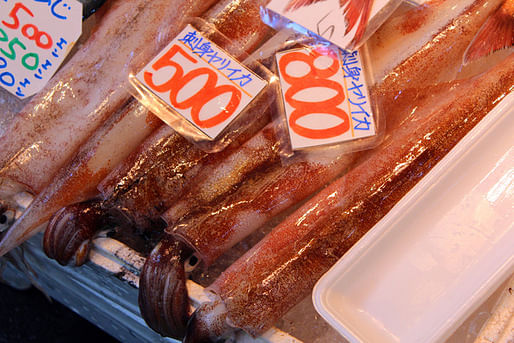 Fresh seafood
Fresh seafood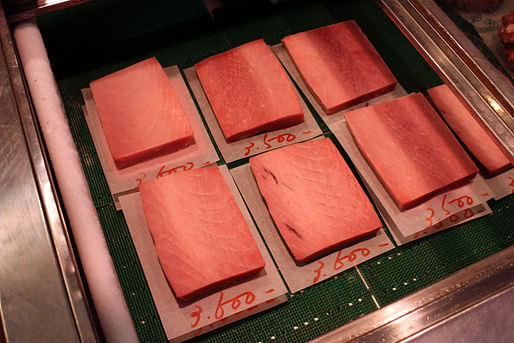 These tuna fillets were so finely sliced they looked like sample cuts of wood. $35-36 a fillet.
These tuna fillets were so finely sliced they looked like sample cuts of wood. $35-36 a fillet.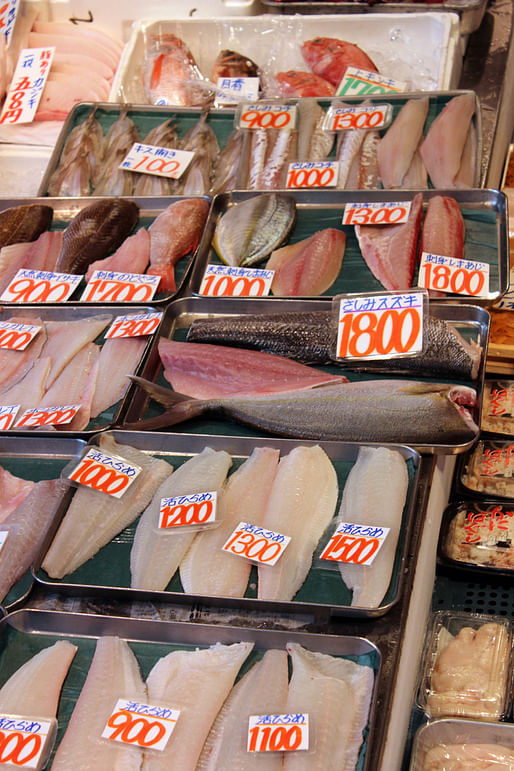 Fresh
Fresh Perhaps some of the best seafood I have ever had. Traditional rice bowl with a savory miso
Perhaps some of the best seafood I have ever had. Traditional rice bowl with a savory miso
soup. My stomach was so full the entire time I was in Tokyo. Amazing food.
My stomach was so full the entire time I was in Tokyo. Amazing food.
Kisho Kurokawa's Nakagin Capsule Tower, and the old Tokyo highway system that weaves through the grid. The highway was installed with short notice for the 1964 olympics to help alleviate traffic concerns. As a result it is very narrow with tight curves, soars high above the street level, and often felt like a race track. Tokyo's grid seemed hardly a grid, and did not appear to have a structured logic. While confusing as this was to navigate the city, it allowed for wonderful sight lines and a very dynamic landscape.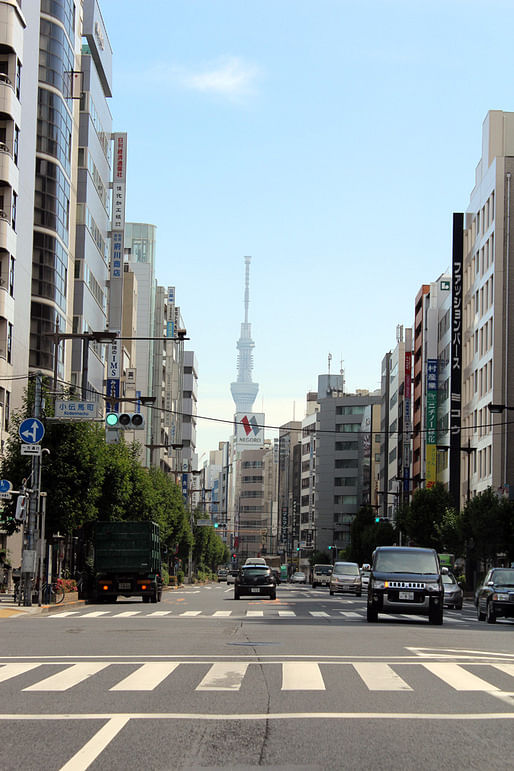
The new Tokyo looms in the distance.

One of my favorite buildings was the Asakusa Visitor Center by Kengo Kuma & Associates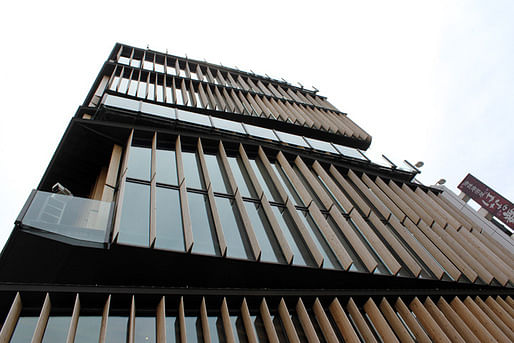
It is a visitor's center for the Sensoji Temple
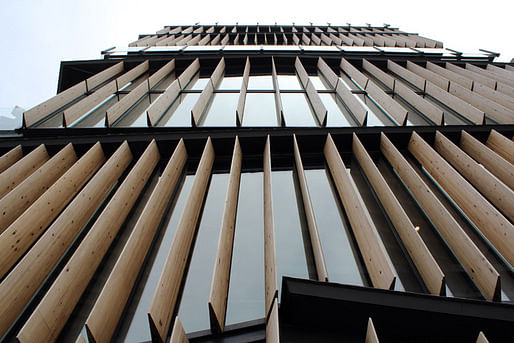
The strong vertical wooden fins had a delicate taper that softened the views as I approached the building.
The craftsmanship and attention to detail was impeccable.
Beautiful, delicate, light, and layered lobby.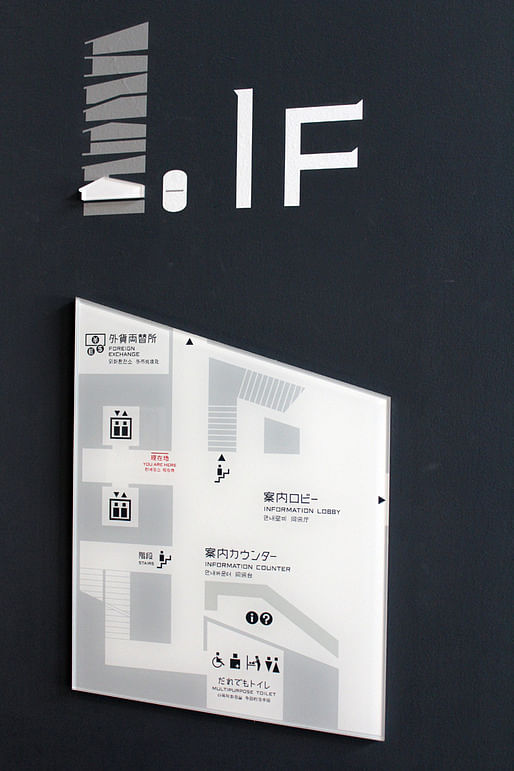
I love when a building is clearly articulated and the design is consistently carried through to even the interior signs. Even the fire extinguisher holders were integrated into the building.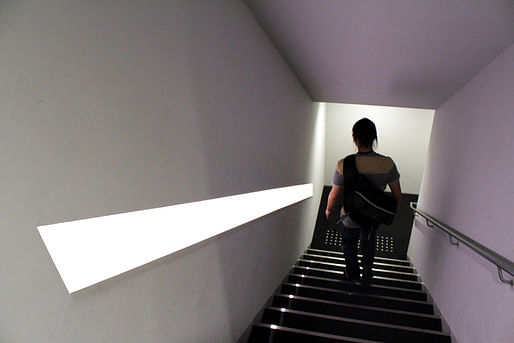
Fire stair detail with pocketed railing.
Roof top terrace.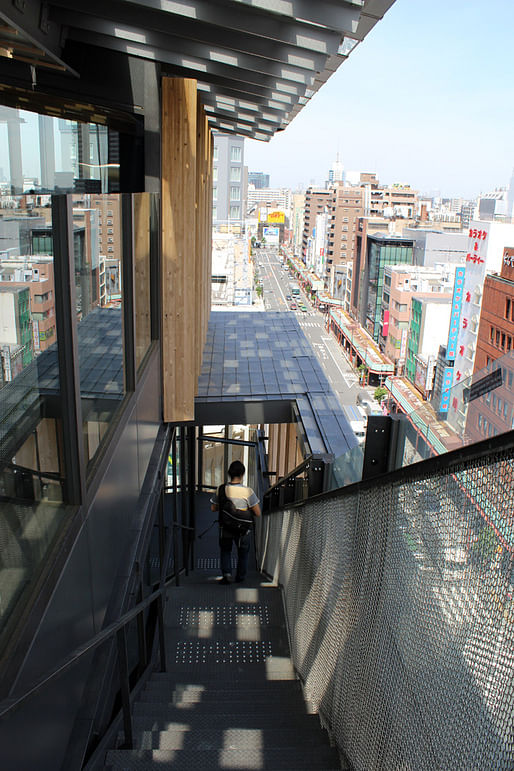
An external stairway wrapped around the outside of the building at parts, moving the user through a series of interior and exterior spaces.
Every view to the outside through some form of filtering.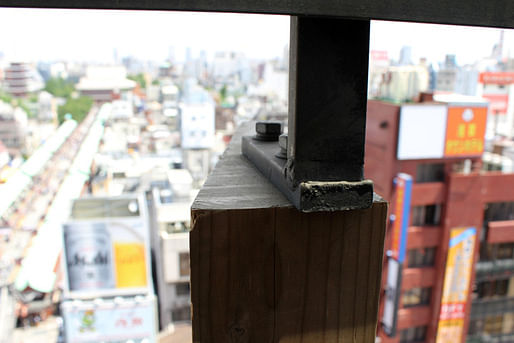
Detail of the wooden fin joint.
New Tokyo Tower, Asahi Beer headquarters, and a piece of the Tokyo skyline from the roof terrace. While Tokyo is DENSE, it was not as tall and deep as I was expecting, with many of the city fabric maintaining modest urban datum of just a few stories tall.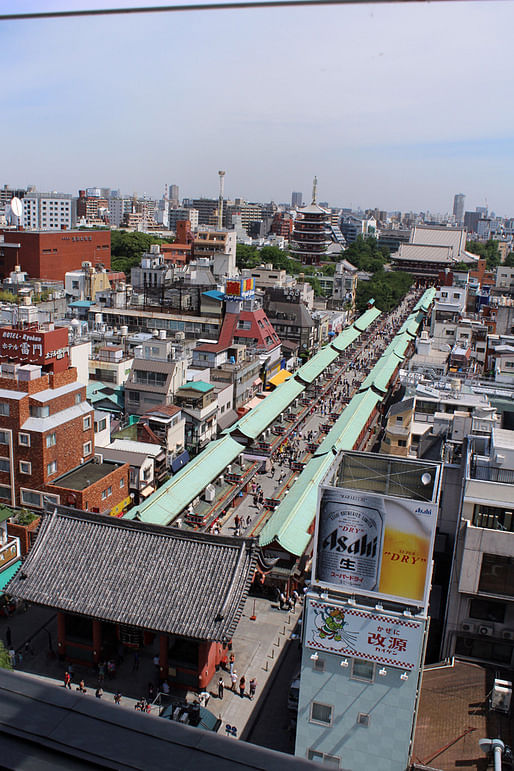
Looking down over the Asakusa Temple complex from the visitor center roof. More a market of gimmicky nick knacks than a religious temple, this is one of the most popular tourist destinations in Tokyo, and we saw many tourists from the west and Japanese visitors from outside of Tokyo. 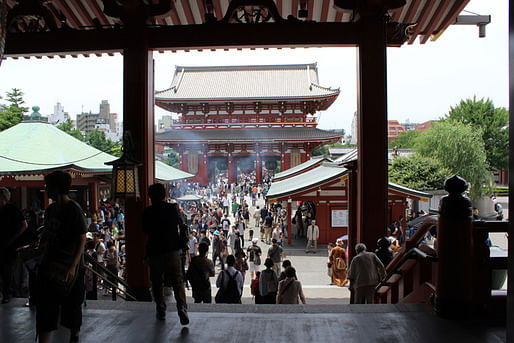
Looking out from the main hall in the Sensoji Temple. 
Low rise Tokyo street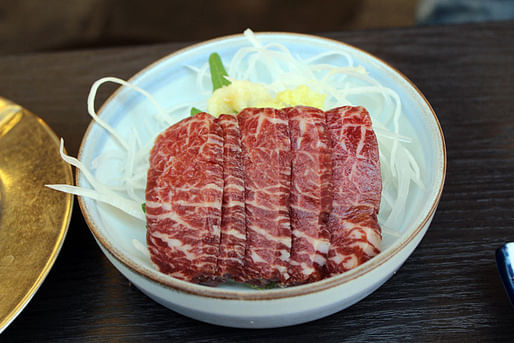
Horse Sashimi, after a bit of prodding from Dew, I tried it. It was quite delicious!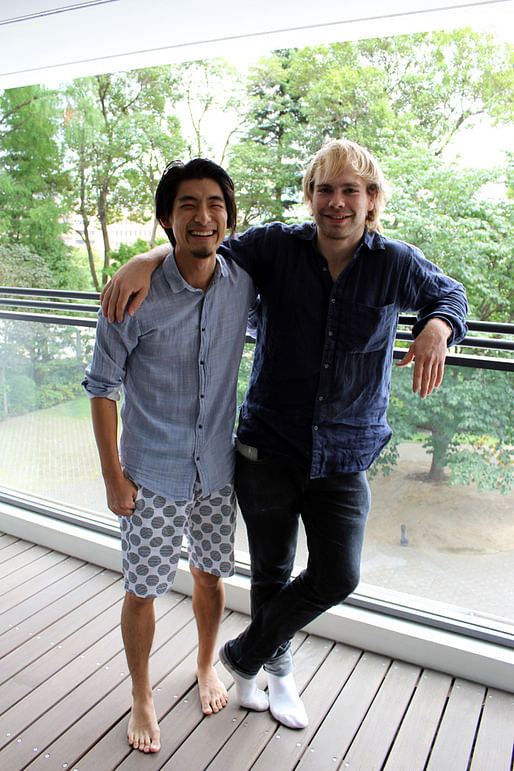
One of the last stops was a brunch at an old friend's apartment. Keigo Fukugaki is a Japanese American who now lives in Tokyo and works for Gensler amongst many other awesome things. We both lived in Copenhagen for nine months of 2006/07 when we studied at DIS as undergraduates. It was a pleasure to see him again, if only for a few hours.Thanks for the brunch, Keigo!
It's also worth mentioning to note the lack of shoes. The Japanese take hygiene very seriously, and shoes off in the house are a given. As are super sophisticated toilets! The streets were clean as a whistle, despite there being no garbage cans, and smoking is forbidden on the street. 
And thanks again to Dew! Without whom this experience would not be possible. I have another 17 hour layover in Japan on my way back home from China, and I look forward to another Tokyo Drift! Until next time!

This work by Alexander Morley is licensed under a Creative Commons Attribution-NonCommercial-NoDerivs 3.0 Unported License.
A new adventure begins as we finish one chapter; we hope to share our story with you. We are graduates of Washington University in St. Louis, Sam Fox School of Design & Visual Arts.
1 Comment
Another lovely tour. Thank you especially for that picture of the fin attachment detail!
Block this user
Are you sure you want to block this user and hide all related comments throughout the site?
Archinect
This is your first comment on Archinect. Your comment will be visible once approved.